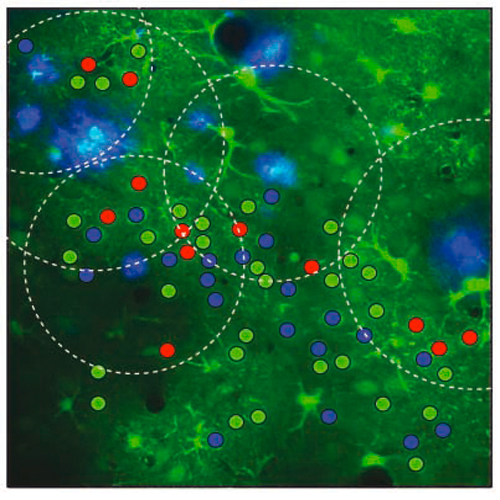Clusters of Hyperactive Neurons Near Amyloid Plaques in a Mouse Model of Alzheimer’s Disease
19-Sep-2008
Science, 2008, 321, 1686-89 published on 19.09.2008
www.sciencemag.org, online article
The neurodegeneration observed in Alzheimer’s disease has been associated with synaptic dismantling and progressive decrease in neuronal activity. We tested this hypothesis in vivo by using two-photon Ca2+ imaging in a mouse model of Alzheimer’s disease. Although a decrease in neuronal activity was seen in 29% of layer 2/3 cortical neurons, 21% of neurons displayed an unexpected increase in the frequency of spontaneous Ca2+ transients. These “hyperactive” neurons were found exclusively near the plaques of amyloid b–depositing mice. The hyperactivity appeared to be due to a relative decrease in synaptic inhibition. Thus, we suggest that a redistribution of synaptic drive between silent and hyperactive neurons, rather than an overall decrease in synaptic activity, provides a mechanism for the disturbed cortical function in Alzheimer’s disease.











